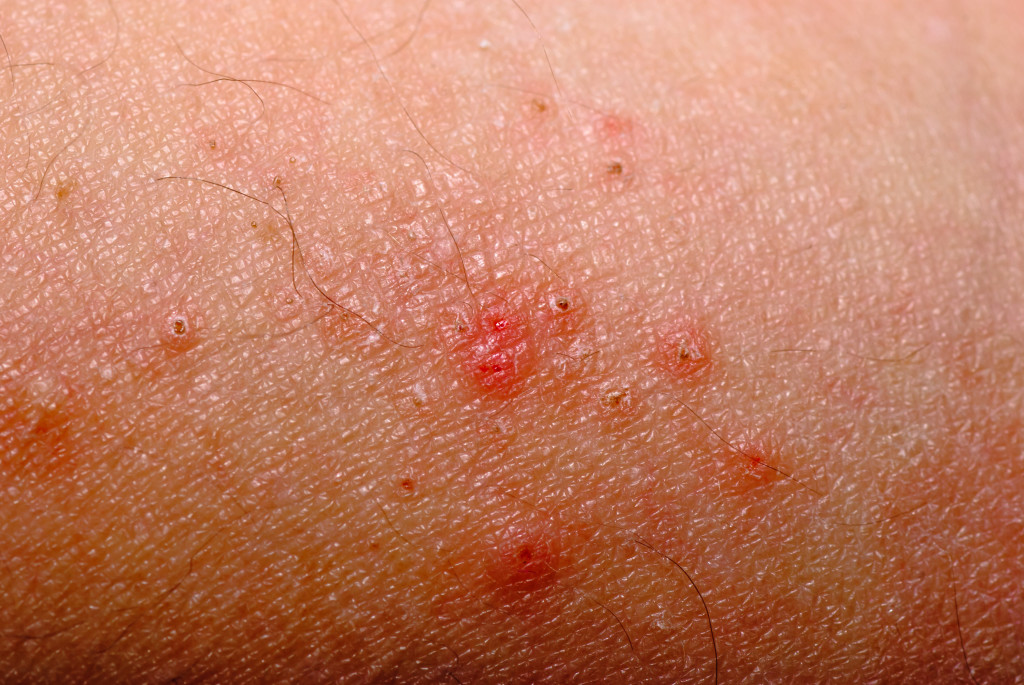As we know, our immune system is the defense mechanism of our body. It protects body from various invaders– bacteria, pathogens, germs and what not.
If there is even a minute problem in this amazing system itself, it can lead to discomfort, disease or may even prove fatal.

- Allergies
Let’s say, our immunity defense system has some internal problems. How does it lead to death or disease by the disease mechanism itself? It can occur through three ways:
- Hypersensitivity,
- Immunodeficiency, and
- Auto immunity
Hypersensitivity (also known as “allergies”)
Here, the body troops (leucocytes) respond extensively to a particular foreign substance leading to damage and excessive inflammation in various parts of the body. This is what primarily causes rashes, swelling and itching, the main symptoms of an allergy.
For example, let’s say, the troops, here leucocytes, are perfectly normal when the person has fruits like banana or strawberries. But, the moment he has a mango slice, the troops declare a high alert and rush to the spot with all their weapons. Thus, the person experiences itching sensation in his throat and even gets rashes all over his body.

An excessive and inappropriate immune response to a specific foreign substance is known as an allergy. It is also defined as an acquired abnormal hyper immune response to a foreign substance during first and subsequent occasions.
Prerequisites for body to trigger an allergic reaction are:
- The body must come into contact with the allergen
- Sensitization of the body must occur for the allergy to take place.
How does sensitization of the body occur?
Suppose there is a guy named Bob. Once upon a time in Bob’s childhood, he experienced mild food poisoning due to arsenic in his food. Thus, the body had come in contact and successfully encountered foreign substance (arsenic in this case) and retained this memory. So, the body, from now on, views arsenic as a major threat.
Now after ten years, Bob tries clams for the first time. And, immediately after a few bites, he starts feeling queasy. Why so? Because majority of edible Crustaceans contain small amounts of arsenic which is safe for human consumption. However, when Bob ate the clams, his body immediately declared high alert and activated a full- blown immune response.
Thus, here, Bob discovered upon going to the doctor that he indeed is allergic to clams. His body has already fulfilled the two pre-requisites for an allergy to occur and that’s precisely what happened when he had clams. Bob, therefore, has officially developed an allergy.
Types of Allergic responses:
There are four types of allergic responses that are triggered by various immunoglobins in the body. They are:
Type I hypersensitivity is an immediate or anaphylactic reaction.
Symptoms of type 1 hypersensitivity normally range from mild discomfort to death. What happens here is due to excessive stress from allergens given by their supposedly supervisor enzyme Immunoglobin E, the mast cells and basophils lose it and begin to degranulate i.e. they begin to randomly eject granules out of their body mass which is definitely not normal under any circumstances. When this occurs on a really large scale, the person dies.
Type II hypersensitivity
This type is similar to auto immunity, however it is largely dependent on the antibody (poison) action. What happens here is, the antibody, instead of binding to foreign body, binds to its own antigen, thus leading to cell destruction. It is triggered by Immunoglobin G and Immunoglobin M antibodies.
Type III hypersensitivity reactions
Also known as Immune complex hypersensitivity, it is similar to type II hypersensitivity. The reaction may be due to an internal or external factor and is usually triggered by Immunoglobin G. The major damage done is on neutrophils and platelets.
Type IV hypersensitivity
Type IV hypersensitivity (also known as cell-mediated or delayed-type hypersensitivity) usually takes between two and three days to develop Type IV reactions are involved in many autoimmune and infectious diseases, but may also involve contact dermatitis (poison ivy). These reactions are mediated by T cells, monocytes, and macrophages.
Some common Allergens are:
Dust, pollen, spores, moulds, feathers, fur, nutrients, cosmetics, perfumes, venom, vaccines, and drugs; physical agents like cold, heat, radiations and even microbes, and a lot more.

Hi Srushti,
thank you for this article, I am desperately trying to find an answer to my annoying itching skin problem, which apparently is an allergy. Drs are only prescribing a relief to the itch but no one is giving me a diagnosis. I have never had skin allergies before. This has happened to me now in Portugal, where its been developing over the last two years. When I am back in South Africa for a couple of months I do not get this. I am so worried that these horrible itchy pimples are getting out of control and need to bring this under control, which of course I cannot unless I figure out that this is. Is it possible to attach a picture of what it looks like on my skin? Do you think that can help with you helping me? If at all possible? Thanking you in advance. Alena